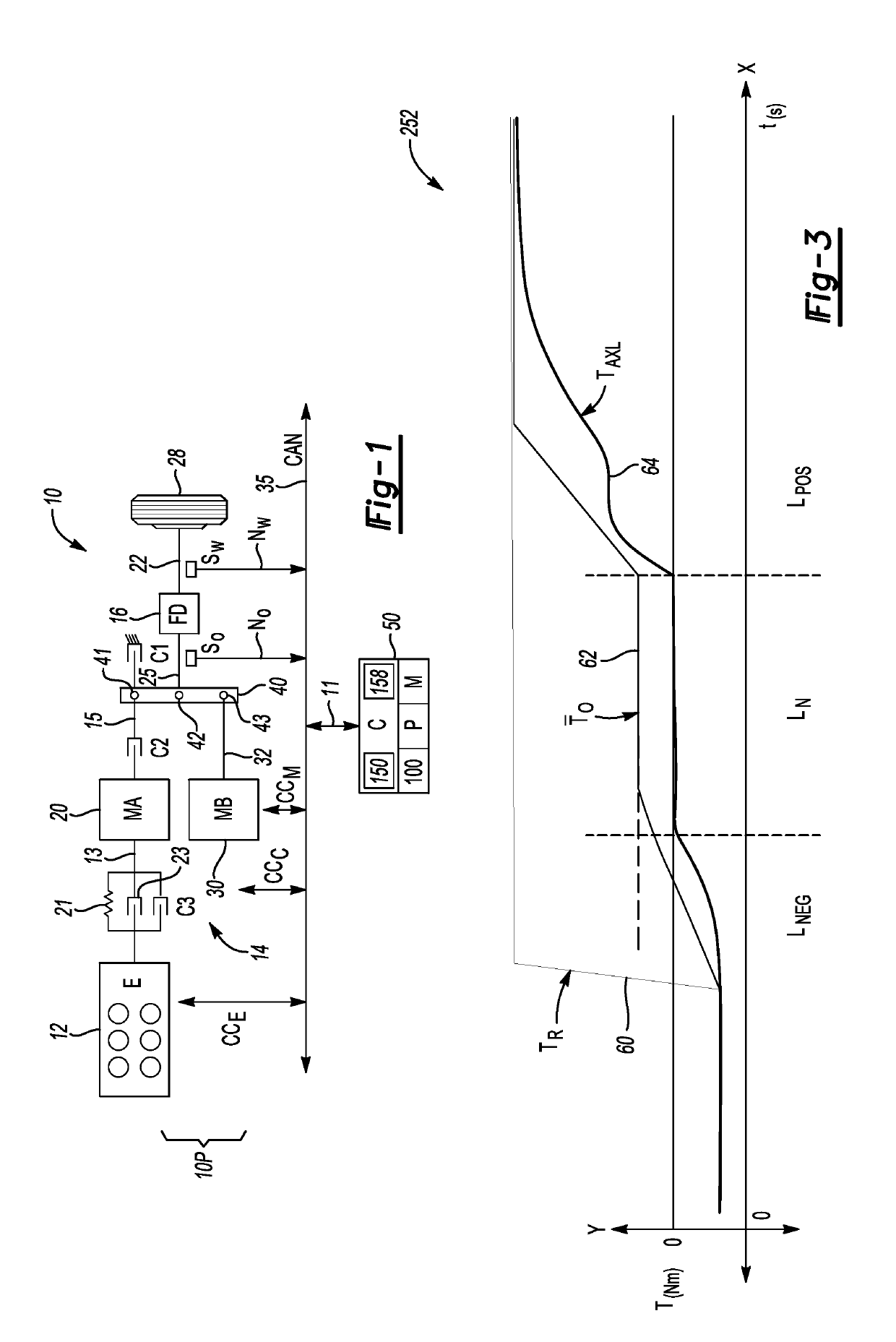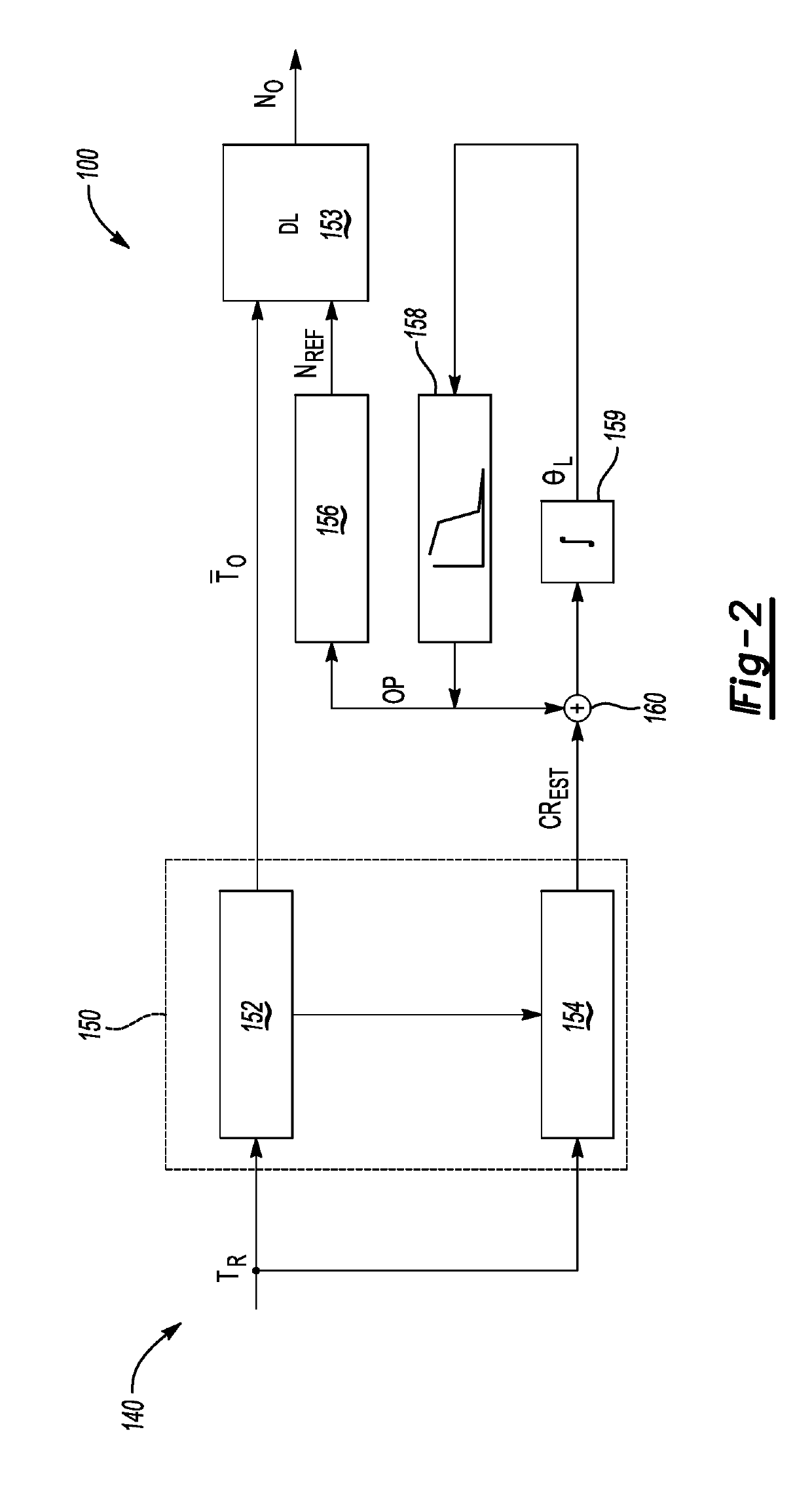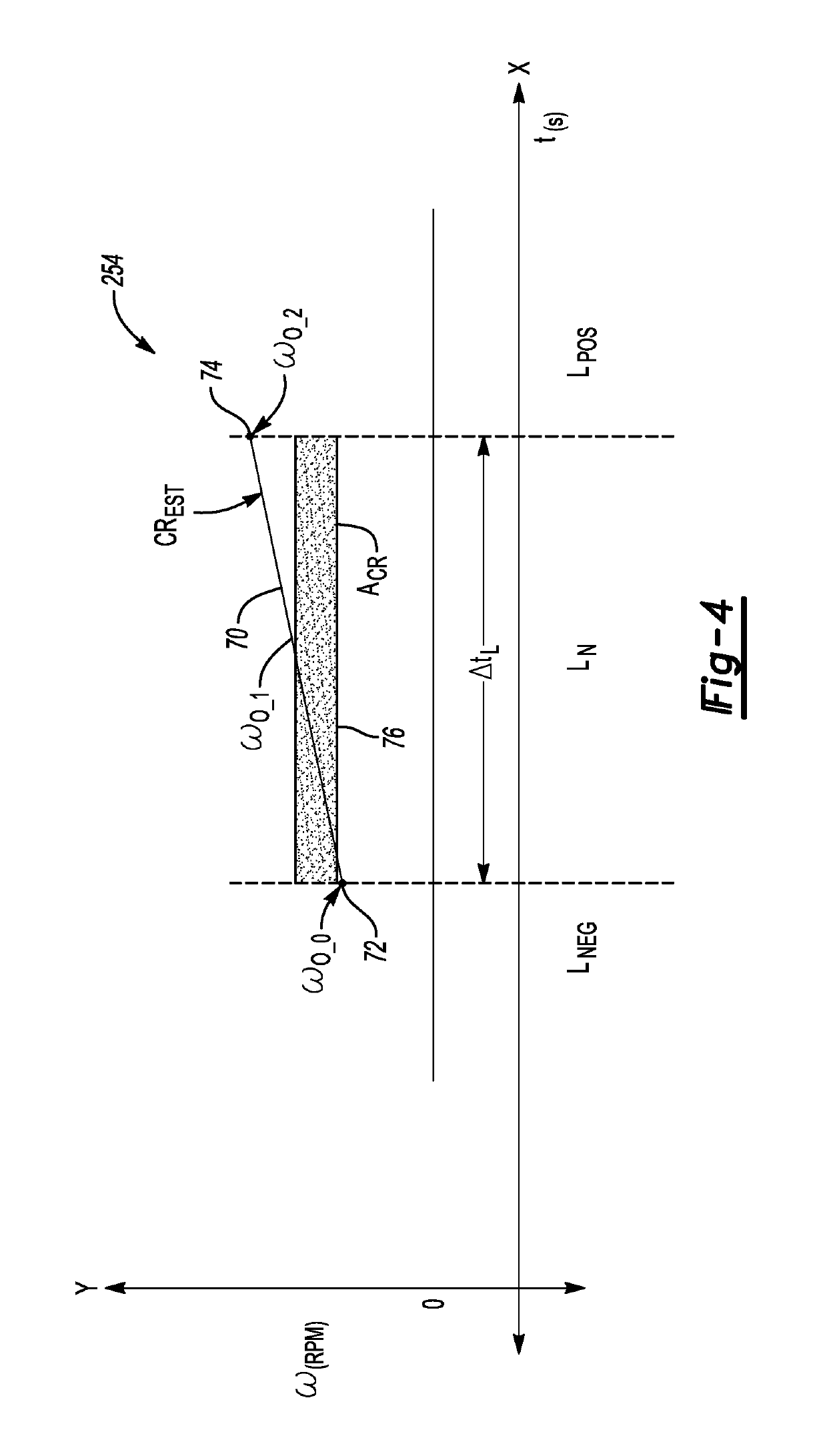Management of gear lash closure rate in a powertrain system
a technology of powertrain system and gear lash closure rate, which is applied in the direction of gearing details, mechanical equipment, transportation and packaging, etc., can solve the problems of reducing the accuracy of speed sensors in closed positions, difficult for controllers to accurately determine the status of lash state transition, and poor low-speed resolution of rotary speed sensors
- Summary
- Abstract
- Description
- Claims
- Application Information
AI Technical Summary
Benefits of technology
Problems solved by technology
Method used
Image
Examples
Embodiment Construction
[0024]A vehicle 10 is shown schematically in FIG. 1. The vehicle 10 has a powertrain system 10P. The powertrain system 10P includes a controller (C) 50 and one or more driveline torque generating devices, shown as a representative internal combustion engine (E) 12 and first and second electric traction motors 20 and 30 (MA and MB, respectively). The powertrain system 10P also includes a transmission 14 and a final drive unit (FD) 16. The vehicle 10 of FIG. 1 is shown as an example hybrid electric vehicle which, in a non-limiting illustrative embodiment, uses the engine 12 in combination with the first and second electric traction motors 20 and 30. Fewer or additional electric motors may be used as part of the powertrain system 10P, either alone or in conjunction with the engine 12. Likewise, the engine 12 may be used as the sole source of driveline propulsion torque. For illustrative simplicity, the hybrid configuration of FIG. 1 will be described hereinafter without limiting the di...
PUM
 Login to View More
Login to View More Abstract
Description
Claims
Application Information
 Login to View More
Login to View More - R&D
- Intellectual Property
- Life Sciences
- Materials
- Tech Scout
- Unparalleled Data Quality
- Higher Quality Content
- 60% Fewer Hallucinations
Browse by: Latest US Patents, China's latest patents, Technical Efficacy Thesaurus, Application Domain, Technology Topic, Popular Technical Reports.
© 2025 PatSnap. All rights reserved.Legal|Privacy policy|Modern Slavery Act Transparency Statement|Sitemap|About US| Contact US: help@patsnap.com



